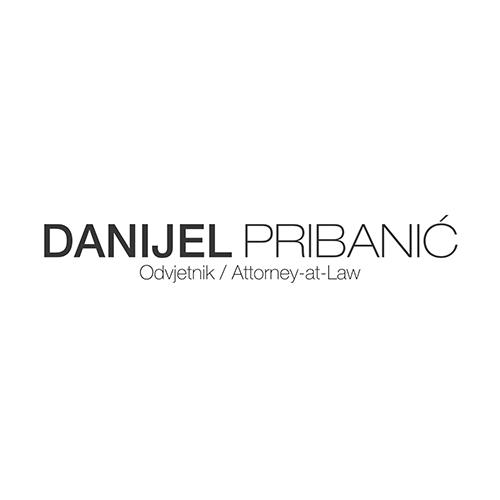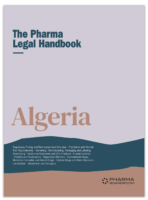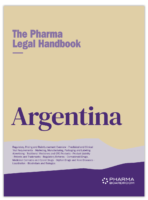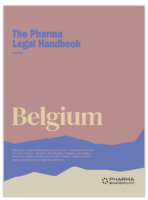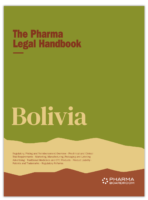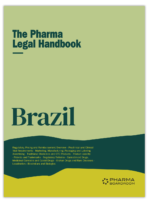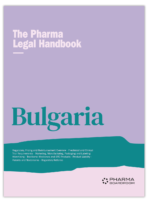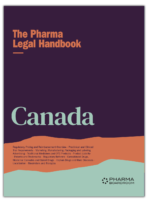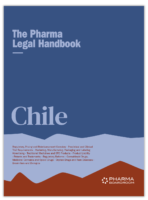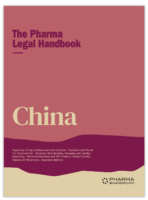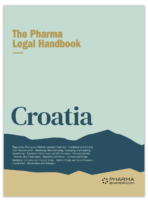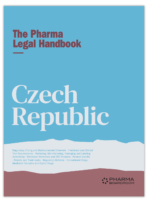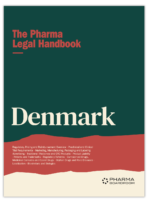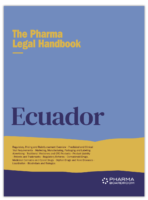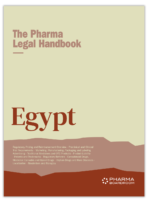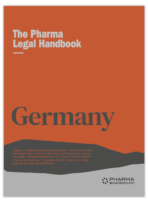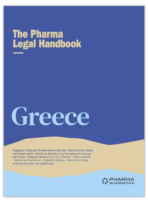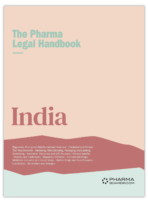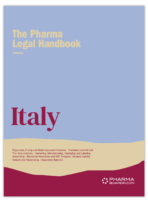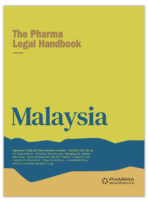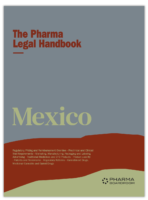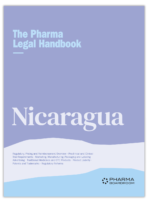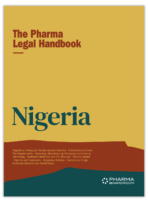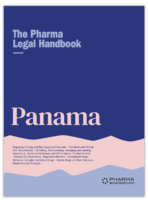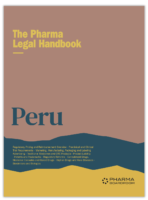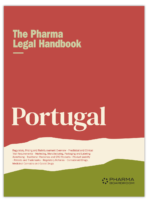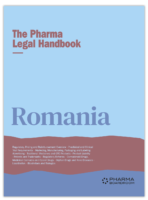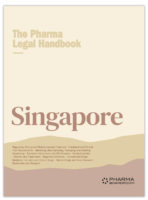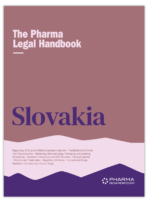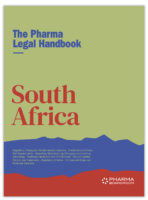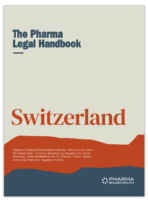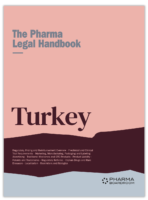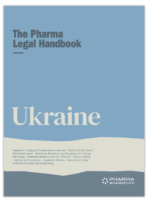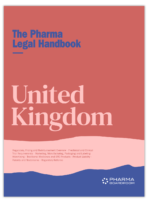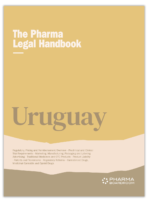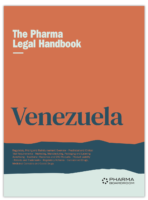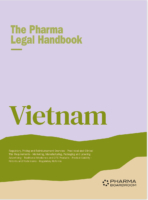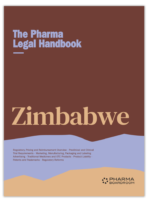Patents & Trademarks
Danijel Pribanić / Croatia
Patents and trademarks in Croatia – a comprehensive legal overview. Prepared in association with Danijel Pribanić, a leading global law firm, this is an extract from The Pharma Legal Handbook: Croatia, available to purchase here for GBP 99.
1. What are the basic requirements to obtain patent and trademark protection?
In the territory of Croatia the State Intellectual Property Office (hereinafter: the Office) carries out patent and trademark granting procedure in compliance with the Patent Act (Official Gazette Nos. 173/2003, 87/2005, 76/2007, 30/2009, 128/2010, 49/2011, 76/2013, 46/2018), Trademarks Act and the Act on Amendments to the Trademarks Act (Official Gazzete Nos. 173/2003, 76/2007, 30/2009, 49/2011, 46/2018) and other regulations.
A) PATENTS
The procedure for granting patents having effect in the territory of Croatia may also be carried out through the European Patent Office, by filing a corresponding motion directly to the European Patent Office, then the European Patent Office carries out the decision on granting patent, and the Office acknowledges the patent by entering it in the Patent Register of Croatia, after which he is equal as if the patent was obtained through national means.
The patent granting procedure consists of several phases in which particular elements of a patent motion are examined. The procedure is instituted by filing the motion, and after its formal examination the motion is published in the Office official gazette. A published patent motion becomes available to the public, whereby it forms part of the state of the art, and any interested person is entitled to inspect the text of the motion. After the publication of the motion the procedure is continued only under condition that the applicant files one of the requests for examination of the requirements for the patent grant. If, within the prescribed time limit, one of the specified requirements has not been filed and the corresponding fee and procedural charges have not been paid, the patent motion will be considered to be withdrawn, and the Office will suspend the patent granting procedure.
After one of the specified requests for examination has been filed, the Office carries out a corresponding additional procedure comprising the examination as to the substance of the patent motion. The procedure may result in the grant of a patent for a proposed invention, provided that the prescribed requirements are complied with, or in the refusal of a request for the grant of a patent, if such requirements are not complied with. It is important to point out that before the final decision on the refusal of a request for the grant of a patent, the applicant is given the opportunity to possibly amend the claims or to file additional arguments and to change the outcome of the procedure in his favour.
The protection for a patent granted on the basis of the results of substantive examination lasts for 20 years as from the filing date of a patent motion and for a consensual patent lasts for 10 years. For the maintenance of a patent the prescribed annual maintenance charges have to be paid. Failing this, the protection has to be terminated even before the expiration of the mentioned terms, namely, immediately after the expiration of the time limits prescribed for the annual payment of charges.
A patent is the exclusive right protecting a patent owner in respect of the economic exploitation of an invention.
Foreign business entity or private individual not having a principal place of business, a domicile or a habitual residence in the territory of Croatia enjoys the protection provided by Patent Act, if that results from international treaties binding Croatia, or from the motion of the principle of reciprocity.
Any sign capable of being represented graphically, particularly words, including personal names, designs, letters, numerals, the shape of goods or of their packaging, three-dimensional forms, colors, as well as the combinations of all the above indicated signs, may be protected as a trademark, provided that such signs are capable of distinguishing the goods or services of one undertaking from goods or services of another undertaking.
A patent is granted for any invention, in any field of technology, which is new, which involves an inventive step, and which is eligible for industrial motion and meets the requirements set out by the Patent Act.
B) TRADEMARKS
Any sign applying for the trademark protection has to be applied for by a separate motion, the constituent element of which is a list of the goods and/or services to which the sign relates, being drawn up in accordance with the Nice Classification. A list of the goods and/or services included in the motion may not be subsequently extended. Therefore, the list has to be drawn up very carefully, since it determines the scope of protection of the trademark concerned.
If the list of products and services consists of the title of the Nicene Classification category, the scope of protection covers only the products / services that derive from the literal and unambiguous meaning of the term in the title.
When submitting a trademark motion, for the purpose of delivering an orderly alphabetical product / service delivery within a particular class, it is recommended to use the terms of the Croatian version of the TMclass database, the harmonized EU Product and Service Classification Database (EUIPO) on the web site of the State Intellectual Property Office or on the EUIPO website.
A trademark motion has to be filed on prescribed form and has to be supported by the evidence on payment of the prescribed administrative fee and examination charges. The protection requirements and the whole procedure concerning the motion is prescribed by the Trademarks Act and its regulations.
Before filing a motion, a good thing would be to carry out a similarity search of earlier trademarks, as to avoid unnecessary problems.
The registration of a trademark registration in Croatia can also be filed via the internet using the e-Application service, which, besides the effective motion process, also reduces its costs.
Any sign capable of being represented graphically, particularly words, including personal names, designs, letters, numerals, the shape of goods or of their packaging, three-dimensional forms, colors, as well as the combinations of all the above indicated signs, may be protected as a trademark, provided that such signs are capable of distinguishing the goods or services of one undertaking from goods or services of another undertaking.
Any business entity or private individual may be a holder of a registered trademark or an applicant for the registration of a trademark. Foreign business entity and private individual not having a principle place of business or a domicile or a habitual residence, respectively, in Croatia , under Trademark Act, enjoy the same rights as are enjoyed by the persons having a domicile or a real and effective industrial or commercial principle place of business in Croatia, if it results from the international treaties binding Croatia or from the motion of the principle of reciprocity.
The invention has to be patentable under the conditions set out by the Trademark Act. In Croatia a trademark is acquired by registration.
2. What agencies or bodies regulate patents and trademarks?
State Intellectual Property Office regulates patents and trademarks.
3. What products, substances, and processes can be protected by patents or trademarks and what types cannot be protected?
A) PATENTS
A patent is granted for any invention, in any field of technology, which is new, which involves an inventive step, and which is eligible for industrial motion. Requirements for granting a patent and exclusion from patentability are regulated by the provisions of Patent Act.
According to the conditions set out in Patent Act, a patent is also granted for an invention which concerns:
- a product consisting of or containing biological material;
- a process by means of which the biological material is produced, processed or used, and
- a biological material isolated from its natural environment or produced by means of a technical process, even if it previously occurred in nature.
The referred biological material is any material containing genetic information and capable of reproducing itself or being reproduced in a biological system.
An invention which concerns plants or animals is considered patentable if the technical feasibility of the invention is not confined to a particular plant or animal variety and if the process for carrying out the invention is not essentially biological.
Process for the production of plants and animals referred to is essentially biological if it entirely consists of natural processes such as crossing or selection.
The following in particular is not considered to be the inventions within the meaning of the Patent Act:
- discoveries, scientific theories and mathematical methods;
- aesthetic creations;
- rules, instructions or methods for performing mental activities, playing games or doing business;
- presentation of information, and
- computer programs.
These objects or activities are excluded from patentability only to the extent that the patent or patent motion refers to such objects or activities as such.
From from patent protection are excluded:
- inventions which concern animal breeds, plant varieties and essentially biological processes for the production of plants or animals, with the exception of inventions which concern non-biological and microbiological processes and products resulting from such processes, as provided for in Patent Act; a microbiological process implies, under the Patent Act, any process involving or performed upon or resulting in microbiological material;
- the human body, at the various stages of its formation and development, and the simple discovery of one of its elements, including the sequence or partial sequence of a gene. An invention relating to an element isolated from the human body or otherwise produced by means of a technical process, including the sequence or partial sequence of a gene, may constitute a patentable invention, even if the structure of that element is identical to that of a natural element. The industrial motion of a sequence or a partial sequence of a gene is disclosed in the patent motion as originally filed, and
- inventions which concern diagnostic or surgical methods or methods of treatment practiced directly on the human or animal body, with the exception of the products, in particular substances or compositions used in such methods.
Inventions are considered unpatentable where their commercial exploitation would be contrary to public order or morality, but not only because such exploitation is prohibited by law or other regulation.
The following, in particular, is considered as above-mentioned unpatentable inventions:
- processes for cloning human beings;
- processes for modifying the germ line genetic identity of human beings;
- uses of human embryos for industrial or commercial purposes, and
- processes for modifying the genetic identity of animals which are likely to cause them suffering without any substantial medical benefit to man or animal, and also animals resulting from such processes.
B) TRADEMARKS
Any sign capable of being represented graphically, particularly words, including personal names, designs, letters, numerals, the shape of goods or of their packaging, three-dimensional forms, colors, as well as the combinations of all the above indicated signs, may be protected as a trademark, provided that such signs are capable of distinguishing the goods or services of one undertaking from goods or services of another undertaking. Absolute and relative grounds for refusal are regulated by provisions of Trademarks Act.
Absolute grounds for refusal are regulated by above-mentioned Act. The following signs cannot be registered:
- signs, which may not be protected as trademarks in accordance with the requirements set out by Trademark Act;
- signs, which are devoid any sort of distinctive character in relation to the goods or services for which registration is requested;
- signs which consist exclusively of signs or indications which may serve, in trade, to designate the kind, quality, quantity, intended purpose, value, geographical origin, or the time of production of the goods or of providing of the service, or to designate other characteristics of the goods or services;
- signs which consist exclusively of signs or indications which have become customary in the everyday language or in good faith and the established practices of trade;
- signs which consist exclusively of the shape which results from the nature of the goods as such, or the shape of goods which is necessary to obtain a technical result, or the shape which gives substantial value to the goods;
- signs, which are contrary to public policy or to accepted principles of morality;
- signs which are of such a nature as to deceive the public, for instance as to the nature, quality or geographical origin of the goods or services;
- signs, which have not been authorized by the competent authorities and are to be refused pursuant to Article 6ter of the Paris Convention for the Protection of Industrial Property (hereinafter: “the Paris Convention”.);
- signs for wines which contain or consist of geographical indications identifying wines and signs for spirits which contain or consist of geographical indications identifying spirits with respect to such wines or spirits not having that geographical origin;
- signs, which contain the name or abbreviation of the name, national coat of arms, emblem, flag or other official sign of Croatia, or a part thereof, and the imitation thereof, except with the authorization of the competent authority of Croatia, and
- signs, which contain or consist of indication of origin or geographical indication in the territory of Croatia if the motion for registration of the trademark is filed after the date of filing the motion for the registration of a designation of origin or geographical indication in the extent provided for by the regulations on the basis of which those are registered and which refer to the same type of product and service.
Registration cannot be refused to signs specified in above-mentioned items 2 to 4, if the applicant for the registration of a trademark proves that the sign has, before the date of filing of the motion for the registration and following the use which has been made of it acquired a distinctive character in respect of the goods or services for which registration is requested.
Relative grounds for refusal are also regulated by Trademark Act. Upon an opposition as filed, a sign cannot be registered:
- if it is identical with an earlier trademark registered for identical goods or services, and
- if because of its identity with, or similarity to, the earlier trademark and the identity or similarity of the goods or services, there is a likelihood of confusion on the part of the public, which includes the likelihood of its association with the earlier trademark.
For the purposes of this Act, “earlier trademark” means:
- trademarks registered in Croatia, enjoying priority right regulated in Trademark Act;
- trademarks registered under international treaties, having effect in Croatia, and enjoying priority right refulated in Trademark Act;
- motions for the registration of trademarks enjoying priority, provided that the trademarks become registered, and
- trademarks which, on the date of motion for the registration of a trademark, or, if priority is claimed, on the date of priority right claimed in the motion, are well known in Croatia, in the sense in which the words “well known” are used in Article 6bis of the Paris Convention.
Upon opposition as filed by the holder of an earlier trademark, a sign cannot be registered if it is identical with, or similar to, an earlier trademark and the registration has been requested for goods or services which are not similar to those for which the earlier trademark is registered, where the earlier trademark has a reputation in Croatia and where the use of the later trademark without due cause would take unfair advantage of, or be detrimental to, the distinctive character or the reputation of the earlier trademark.
Also, opposition as filed, a sign cannot be registered if its use would infringe one of the following earlier rights:
- a right to a personal name;
- a right of personal portrayal;
- a copyright, and
- industrial property rights.
For the purposes of Trademark Act, “earlier right” means rights acquired on the date which is earlier than the date of motion for the registration of a trademark, or, if priority right is claimed, as from the date of priority claimed in the motion.
On the basis of opposition as filed, a sign cannot be registered if its use would infringe the right of the person who, at the time of filing of a motion for the registration of a trademark, had a firm, provided that such firm or the essential part thereof is identical with or similar to the sign in respect of which the motion is filed and provided that identical or similar goods or services are the subject matter of the firm’s activity, unless the applicant had the identical or similar firm at the time of filing the motion for registration of a trademark.
On the basis of opposition as filed, a sign cannot be registered if it is identical with, or similar to, an earlier trademark which was registered for identical or similar goods or services and conferred on them a right which has expired for failure to renew the registration of the trademark within a period of not more than two years as from the expiry of the trademark, unless the holder of the earlier trademark gave his consent for the registration of the later trademark or did not use his trademark.
On the basis of opposition as filed, unless a trade agent or representative justifies his action, the trademark will not be registered on behalf of the trade representative or the representative of the trademark holder without his consent.
4. How can patents and trademarks be revoked?
A) PATENTS
In order to maintain the rights from the motion of a patent and a recognized patent, it is obligatory to pay the prescribed annual fee, the amount of which varies depending on the year of validity. Otherwise, the patent ceases to be valid even before the expiration of the estimated duration, immediately after expiry of the prescribed deadlines for the annual payment of costs.
The first two years of patent maintenance are covered by the fee and the costs of filing the motion, so that the first obligation to maintain the rights from the motion is due for the third year of its maintenance.
The patent is the private property of its holder, and therefore the sole responsibility for maintaining a patent is exclusively on the holder, without the prior invitation of the Office.
After the protection expires, any interested person may freely use the invention without the need of obtaining the permission of the previous patent holder.
If the patent owner surrenders a patent, it will be terminated on the day following the day on which a certified written declaration concerning the surrender thereof has been filed to the Office.
The patent holder may waive the patent in whole or in part in a written statement of the waiver, certified by a notary public. The effect of the waiver statement commences on the next day following the date of delivery to the Office.
If a particular right on behalf of third persons has been entered into the register, the patent owner may not surrender a patent without the prior certified written consent of those persons.
Disclaimer of the patent has to be entered in the register and published in the official gazette of the Office.
B) TRADEMARKS
The value of the trademark can be terminated in several ways:
1. Undoing the value after the expiry of the protection period
The bearer of the trademark should take care of the expiry of the protection period, and apply for the extension of the value before the expiry of that period. The request for the extension of the value can be submitted even in the additional period of six months with the payment of double fees and reimbursement.
2. Recall
The bearer is obliged to use the trademark and to ensure that the trademark does not mislead the public or becomes a common name for the products and / or services for which it is registered in the stores.
An interested party may apply for a trademark revocation to the Office, and in such case the holder has to demonstrate the actual use of the trademark in relation to the products and / or services for which it is registered, or to justify the reasons for the revocation
3. Disclaimer
The trademark holder may waive the trademark in full or in relation to certain products and / or services on the basis of a written statement at any point in the duration of the protection.
4. Announcing the nullity of the registration decision
A stamp that has not been registered in accordance with legal provisions may be canceled in a special procedure, which is initiated ex officio, at the request of a state attorney or an interested person.
The request for revocation of a trademark may be filed with the Office by any private individual or business entity. A trademark may be revoked if, within a continuous period of five years, it has not been put to genuine use in Croatia in relation to the goods or services in respect of which it is registered, and there are no justified reasons for non-use.
A trademark may also be revoked if, after the date on which it was registered,
- in consequence of acts or inactivity of the holder, it has become a common name in the trade for products or services in respect of which it is registered,
- in consequence of the use made of it by the holder of the trademark or with his authorization, in respect of the goods or services for which it is registered, it is liable to mislead the public, particularly as to the nature, quality or geographical origin of those goods or services.
5. Are foreign patents and trademarks recognized and under what circumstances?
Foreign business entities or private individuals not having a principal place of business, a domicile or a habitual residence in the territory of Croatia enjoy the protection provided by Patent Act, if that results from international treaties binding Croatia, or from the motion of the principle of reciprocity.
Foreign business entities and private individuals not having a principle place of business or a domicile or a habitual residence, respectively, in Croatia, under Trademark Act, enjoy the same rights as are enjoyed by the persons having a domicile or a real and effective industrial or commercial principle place of business in Croatia, if it results from the international treaties binding Croatia or from the motion of the principle of reciprocity.
Croatia is a member of all relevant international treaties regulating patent and trademarks protection.
6. Are there any non-patent/trademark barriers to competition to protect medicines or devices?
A barrier to competition is time barrier applicable to generic medicinal product. Requirement for the protection is the following: marketing authorisation applicant cannot place on the market the generic medicinal product until 10 years have elapsed from the initial authorisation of the reference product.
7. Are there restrictions on the types of medicines or devices that can be granted patent and trademark protection?
A trademark cannot be registered if it fullfils the requirements for absolute or relative grounds for refusal set out by Trademark Act.
An invention is not patentable is it fullfils the requirements for exclusion from patentability set out by Patent Act.
Above mentiones is assessed based on criteria applicable in the European Union.
8. Must a patent or trademark license agreement with a foreign licensor be approved or accepted by any government or regulatory body?
A) PATENTS
According to Patent Act the conclusion of the license agreement or the contract on the transfer of a joint patent requires the consent of all the owners thereof.
The license agreement and the agreement on the transfer of a patent is concluded under the conditions and in a manner as prescribed by the Obligatory Relations Act
B) TRADEMARKS
The holder of a trademark may transfer his trademark to other persons in respect of some or all of the goods or services for which it is registered. On request of one of the parties, the transfer of rights will be entered in the register, if a certified copy of the transfer contract, or the certified part of the contract, or the original certificate of the transfer signed both by the former and the new holder of the right is submitted to the Office.





